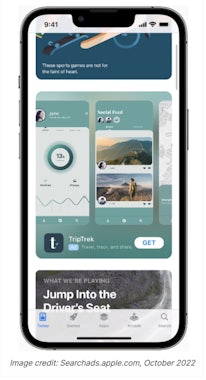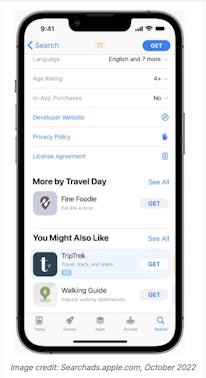Welcome to the latest blog from Impression on paid search industry updates, where we uncover the latest PPC trends to help you stay ahead of the curve.
The period leading up to Christmas is usually an exciting and busy time for most industries. However, for this month in the PPC industry, there have not been many significant updates. Therefore, we will be sharing information from the month of November that is still relevant to the PPC industry in December.
So, cosy-up by the fire with a festive beverage of your choice and I hope you enjoy the content we have in store below.
As usual, traffic light imagery is featured throughout to indicate the importance of each new update – red denoting a priority update, green representing a less important update and amber lying somewhere in the middle.
Google updates Display and Video 360 account-level suspension policies

In accordance with other account policies seen on Google platforms, Google is found to be introducing a new ad and account policy and suspension page specifically for Display and Video 360 users.
Throughout the year, Google has made numerous changes to its disapproval policies, including updating its ad destination policy, unavailable video policy, and 3-strike rule. However, to round this year off, Google is now found to be updating the main Disapprovals and Suspension page to have a page solely dedicated to Display and Video 360 users. This new page will provide clarity as to what violations constitute an account suspension.
As well as this, Google has also announced that along with this, partner accounts could face account suspensions, if not careful. For example, if an advertiser within a partner account has been found to violate policies on a continual basis – the account itself could be suspended.
What does this mean for me?
For the world of PPC, these new policy updates for Display and Video 360 will help give advertisers more context around the nature of ad disapprovals. Equally, it will also provide guidance to advertisers on how to troubleshoot. Though, thankfully if an account is hit with an account suspension on either your own or a partner’s account, you have the opportunity to appeal.
However, to be on the safe side especially now given that more and more policies are being rolled out it’s always a good idea to get into a habit of regularly health-checking your accounts weekly for any disapprovals. This way, your account will unlikely be pulled up and you would be more in touch with Google’s best practices.
Google announces data-driven attribution simulator

Google has recently introduced a new tool called the data-driven attribution simulation (DDAS) for its advertising platform, Google Ads. This tool is designed to help businesses understand the potential impact of switching to a data-driven attribution model for their ad campaigns.
The data-driven attribution model is an alternative to the traditional last-click attribution model, which attributes conversions (such as a sale or sign-up) to the last ad that a user clicked on before converting.
The data-driven attribution model, on the other hand, uses machine learning algorithms to analyze a user’s interactions with an ad campaign and determine the relative contribution of each touchpoint to the final conversion. This allows businesses to get a more complete picture of the customer journey and make more informed decisions about their advertising strategies.
What does this mean for me?
The new DDAS tool will allow businesses to simulate the impact of switching to a data-driven attribution model on their Google Ads campaigns. It will provide valuable estimates of how the conversion rates, cost-per-conversion, and return on investment of their campaigns would change if they were to switch to the data-driven attribution model.
This information can be valuable for firms that are considering switching to the data-driven attribution model, as it can help them to understand the potential impact of the change on their ad campaigns and make more informed decisions about their advertising efforts.
For example, if a business is considering switching to the data-driven attribution model but is uncertain about the potential implications of this decision, then marketers will be able to use the DDAS tool to see how the conversion rates and cost-per-conversion would change as a result of the transition.
If the results of the simulation show that the data-driven attribution model would significantly improve the performance of the company’s ad campaigns, marketers may recommend switching to the data-driven attribution model.
Apple launched two new ad placements in App Store

Apple has introduced two new advertising placements that include ‘Today Tab’ and ‘Product Page Ad Placement’ in App Store, despite recently implementing enhanced privacy measures.
The Today tab ad placement allows marketers to showcase their app on the front page of the app store while users are scrolling their ‘Today’ feeds. In order to test in practice Today tab ads, digital marketers have to set up a custom product page in App Store first.

Once a custom product page is approved in App Store Connect, it will undergo a secondary approval process in Apple Search Ads in order to be used for advertising purposes.
The next step to serve ads on the Today tab is preparing the appropriate creatives. Apple requires including at least four portrait assets or at least five landscape image assets.
The second new advertising placement can be found on individual product pages within the App Store. When users are browsing a specific app’s product page, the new ‘Product Page Ad Placement’ appears at the bottom in a section called “You Might Also Like”. The new ad placement is already available worldwide, with the exception of China.

What does this mean for me?
Building brand awareness is a crucial aspect of digital marketing strategy for several reasons.
Firstly, having a strong brand can help businesses differentiate themselves from their competitors. A well-known brand can establish trust and credibility with customers, which can make them more likely to choose that brand over others.
Secondly, building brand awareness can increase customer loyalty. Customers who are familiar with a brand are more likely to continue doing business with that brand over time. This can lead to repeat purchases and customer retention, which can be more cost-effective for a business than constantly having to attract new customers.
Thirdly, brand awareness is an integral part of the sales funnel and can help drive additional traffic and increase sales made by new customers. When customers are aware of a brand and its products, they are more likely to seek out and purchase those products. This can lead to an increase in website traffic and sales.
Both ad placements will offer crucial locations for building brand awareness and experienced marketers should take a close look at them in the near future to utilise these new opportunities for building brand awareness for their clients in new markets.
Look out for our next blog in the New Year for more paid search industry updates to inspire your PPC strategy. If you want to talk about your business’ aspirations, get in touch! Have a great Christmas and a Happy Holidays.



